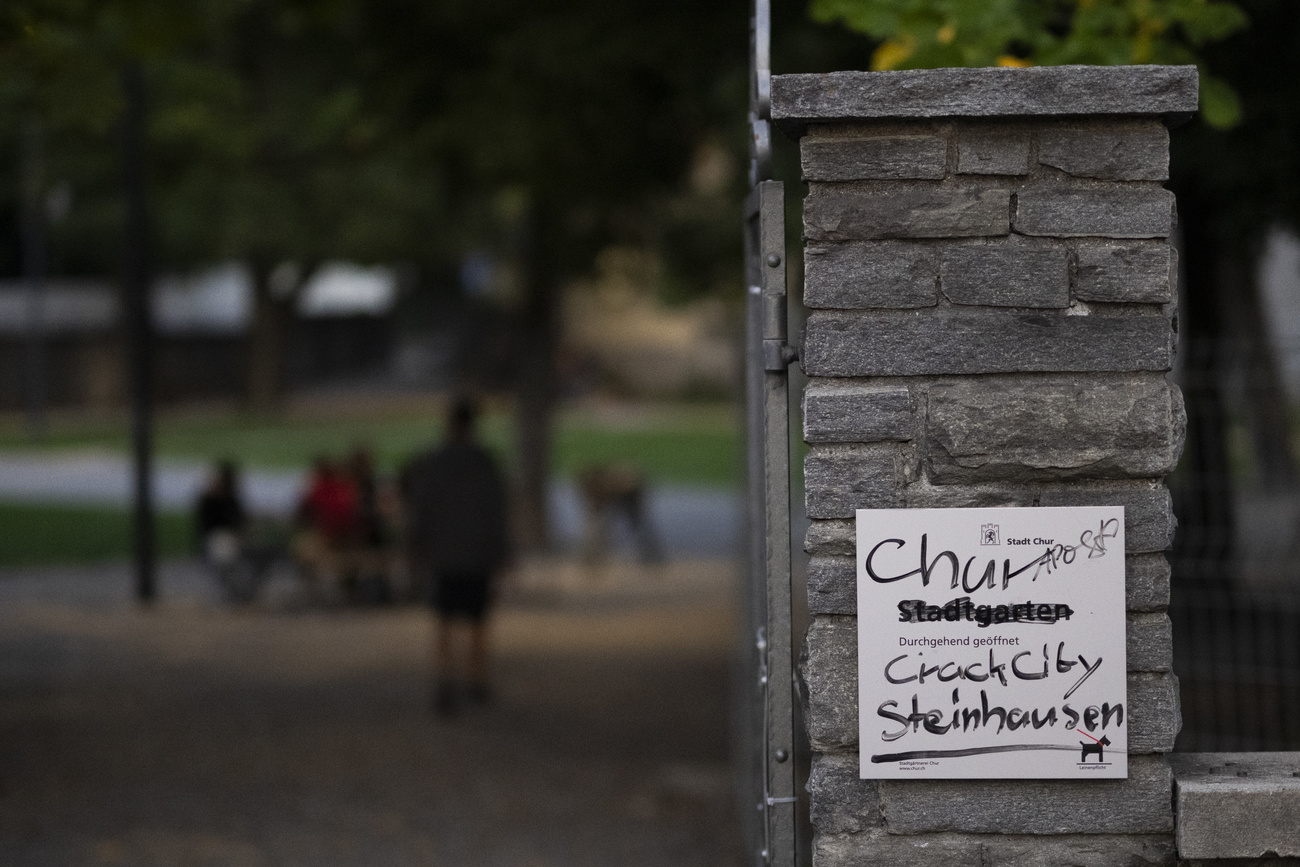Powder snow’s deadly lure

Swiss resorts have launched a new safety campaign to highlight and reduce the risk of injury or death to off-piste skiers.
About 25 skiers and snowboarders die in avalanches each year in the Swiss Alps, but half the accidents could be avoided if the simplest of precautions were taken.
“You have to know how snowboarders think,” says Andreas Perren, head of the mountain guide centre in Zermatt.
“They want to be ‘free’. They watch snowboarders on television riding off-piste and they want to do the same. And more and more skiers are following the tracks in powder snow made by snowboarders, so off-piste skiing has become very popular.”
Perren’s office offers guided off-piste skiing on the virgin slopes around Zermatt.
However, at SFr145 ($104) a day (based on a minimum of 3 people), most skiers wanting a taste of powder in Zermatt and at other resorts across the Swiss Alps leave the marked slopes at their own risk.
Avalanche threat
A study carried out by Switzerland’s accident prevention office has found that few are aware of the threats posed by avalanches or, when skiing on glaciers, crevasses.
In cooperation with the office, the Swiss Association of Cable Car Companies introduced a safety campaign last year and has extended it to more resorts – including Zermatt – this winter to reduce the number of accidents.
The campaign consists of information boards placed at the top of ski lifts called “Freeride Checkpoints”.
“Each board contains information about how to act outside the secured slopes,” says the association’s Felix Maurhofer, who came up with the idea for the campaign.
“It includes an up-to-date avalanche bulletin and tips for skiing off-piste,” Maurhofer adds. “But it also includes a warning not to leave the marked runs if you don’t have the proper equipment or skills.”
Dangers
Maurhofer and Perren believe no more than 20 per cent of all skiers or snowboarders carry rescue transmitters, shovels or first aid kits. And, as the statistics have shown, few are aware of the dangers.
“People see a few tracks in the powder snow which leads them to believe it’s safe,” explains Perren.
“That’s the problem on the glaciers around Zermatt. They ski next to the existing tracks, and they are followed by more skiers who do the same. All the time, the tracks are getting closer and closer to a crevasse hidden by a thin layer of snow.
“Eventually, someone falls into the crevasse. That’s what you discover when you have to go and rescue them,” says Perren.
When it comes to reducing the risk of triggering or getting caught in an avalanche, Maurhofer says there are many considerations to take into account.
Warning
“Avalanches can only occur on a slope greater than 30 degrees,” he explains. “The snow has to be packed, and usually north and east facing slopes are more dangerous in the middle of the winter than southern ones.”
As Perren warns, the avalanche danger can also change in a matter of hours. “A slope maybe fine at 9am, but it could change by 2pm because of its exposure to the sun and changing temperatures.”
Maurhofer recommends that skiers or snowboarders who want the thrill of going off-piste take special courses run by the Mountain Surf Club, which are available at several top resorts in Switzerland (see related link). A course for beginners costs SFr25.
“Freeride Checkpoints” have been set up at 25 Swiss ski resorts including Zermatt, Arosa, Davos, Engelberg, Gstaad, Adelboden, Grindelwald, Mürren, Wengen and Verbier.
swissinfo, Dale Bechtel
25 people die each year in avalanches while skiing off-piste in the Swiss Alps.
At least half of all accidents could easily be prevented.
Each “Freeride Checkpoint” board warns skiers and snowboarders that they are responsible for their own actions when going off piste.
It advises them to take a safety course, available through the organisation, Mountain Surf Club.
The board contains an up-to-date avalanche bulletin, and a hazard scale which rates the probability of an avalanche on a scale of one to five.
Lights on the board flash when the danger is estimated at three or more. “Three” notes, “Triggering is possible even with low additional loads, especially on the steep slopes indicated. In certain conditions, a few medium-sized but occasionally also large avalanches may occur spontaneously.”
A checklist on the board tells off piste skiers to: carry basic equipment such as a shovel, transmitter and first aid kit; read the avalanche bulletin; never to ski off piste alone; not to trust existing tracks; only ski off piste when visibility is good; and to observe changes to weather.

In compliance with the JTI standards
More: SWI swissinfo.ch certified by the Journalism Trust Initiative









You can find an overview of ongoing debates with our journalists here . Please join us!
If you want to start a conversation about a topic raised in this article or want to report factual errors, email us at english@swissinfo.ch.